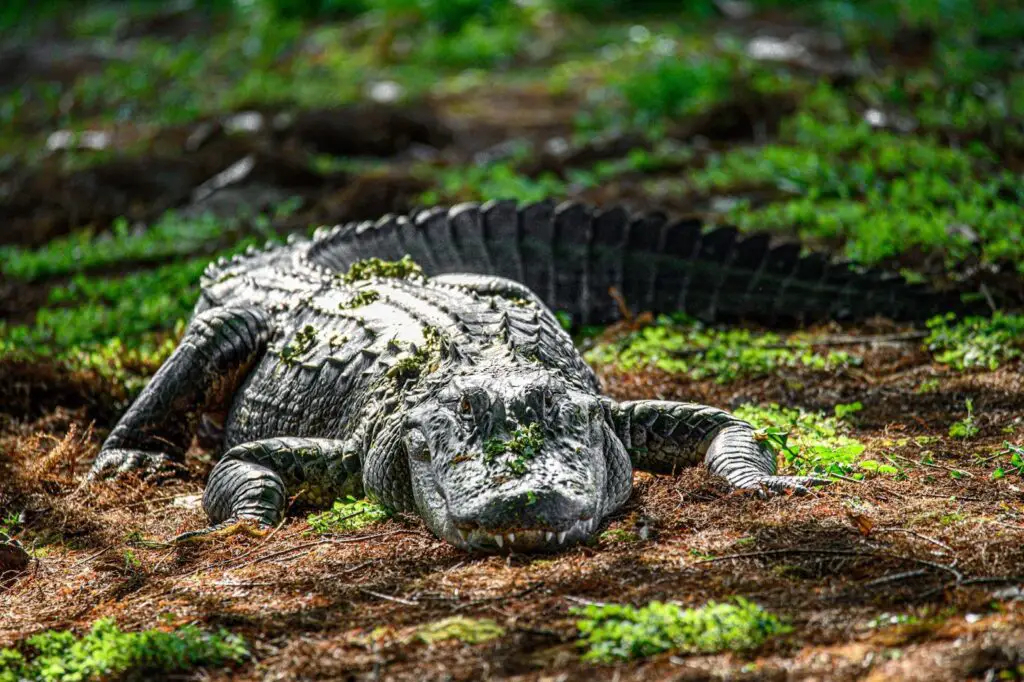Faunas of Florida: Admiring 8 Animals Unique to the State

If there’s anything Florida is famous for, it’s the large amount of diverse wildlife that local Floridians must learn to coexist with. From noble panthers and imposing alligators to fierce rattlesnakes, Florida’s faunas are a beauty to behold.
As humans occupy more lands to form settlements, wildlife habitat is reduced, leading some of them literally to people’s doorsteps. Although they are wild, it’s important to know them for your safety and harmonious coexistence. Here are eight of the local wildlife that you should know more about:
Brown Recluse Spider
It has many other names–the Fiddleback Spider, Brown Fiddle, and the Violin Spider. Whatever you call it, the Brown Recluse Spider is known to be one of the most dangerous arachnids in Florida. Despite its small size, this spider’s venom is potent enough to bring anyone to the hospital. Encountering one is rare, but knowing what it looks like helps you avoid a painful bite.
The Brown Recluse Spider’s name comes from its tendency to play dead and hide in dark corners like the damp pile of leaves or crumpled clothing left untouched for too long. These spiders only have six eyes instead of the usual eight-eyed pattern. They also have a dark violin-shaped pattern on their flat head. Like wolf spiders, they’re also less hairy.
Miami Blue Butterfly
If you spot a butterfly with attractive, bright-blue colored backs and gray undersides, with wings painted with four black spots and white bands, that’s most likely the beautiful Miami Blue Butterfly.
These butterflies usually feed on flora like blackbeads, gray nicker-beans, and balloon vines. Although they thrive in places like tropical hardwood hammocks and tropical pine rocklands, they’re an endangered species threatened by habitat loss and the invasion of non-endemic species of ants and iguanas.
Florida Panther
The Sunshine State animal can be distinguished through its white bellies and black linings on the tips of its tails, ears, and nose. These long-tailed cats can vary in their hues. They thrive in habitats with warm climates like upland forests and wetlands like the Florida Everglades. They usually hunt hogs, white-tailed deer, and occasionally, even alligators.
Since 1973, this species has been considered an endangered species and has been threatened by habitat loss, hunting, and human disturbances like vehicle collisions. In the 2010s, there were only an estimate of more than 200 Florida panthers in the wild.
West Indian Manatee
West Indian Manatees are an aquatic mammal species included in the Sirenia order. Though they have grey, seal-shaped bodies with rounded flippers and wrinkled faces with whiskers similar to a bear’s, Manatees have been frequently mistaken for mermaids long ago.
These seal-like creatures live in shallow waters like estuaries, canals, salt-water bays, and slow-flowing rivers full of seagrass beds and vegetation.
Although considered herbivores, they do sometimes consume invertebrates and small fish while eating vegetation. Through the Marine Protection Act of 1972, the Florida Manatee Sanctuary Act of 1978, and the Endangered Species Act of 1973, the West Indian Manatee is a protected animal under US Federal Law.
Florida Black Bear
A subspecies of the American Black Bear, the Florida Black Bear is Florida’s only bear species. They’re omnivorous and can be spotted roaming around forest lands, which remain untouched by humans. Sometimes, they also thrive in swamps, scrub oaks, or flatwoods.
If these bears happen to step foot in your backyard, stay calm and don’t get close. They will soon leave your property. If they return repeatedly, rummaging through your trash cans and threatening your family’s safety, call for professional and humane wildlife removal services.
Humane removal is necessary because, under the Bear Conservation Rule, these American Black Bears are protected to preserve the dwindling population due to the destruction of their habitat. Since the 1980s though, its population has been growing, and it’s now estimated that over 4,000 Florida Black Bears remain in the wild.
Florida Scrub Jay
If you look to the sky or treelines and see a flash of blue, white and gray against the sky, it’s most likely that you saw one of the magnificent Florida Scrub Jays. These birds can only be found in the State of Florida, particularly in the Florida scrublands where there are oaks scrubs, scrubby flatwoods, and sandy soils.
Here, the Florida Scrub Jays forage on the ground and trees to satiate a diet that usually consists of acorns, berries, and seeds. They occasionally hunt spiders, snails, rodents, and eggs of smaller and younger birds.
For the past century, 90% of its population has been in decline due to habitat loss, making it an endangered species.
East Diamondback Rattlesnake
East Diamondback Rattlesnakes can be distinguished by the unique set of 24 to 35 diamonds on their earth-colored back. This species of pit viper is considered one of the most venomous snakes in North America. For humans, a lethal dose of its venom ranges from only 100 to 150 grams.
These snakes thrive in pine flatwoods, longleaf pine, coastal barrier islands, and turkey oak hammocks. During the dry season, they can also be spotted in wet prairie environments. That, or they would sometimes be hanging around suburban neighborhoods, where they’d sometimes shelter in gopher or tortoise burrows, and inside bushes or trees. Here they would hunt large insects and small mammals like rabbits.
American Alligator
American Alligators are largely known to resemble the American Crocodile and are one of the two crocodilians relative to Florida. Unlike crocodiles though, American Alligators have broader snouts with no lower teeth protruding when closing their jaws. Their ideal habitats include swamps, marshes, lakes, freshwaters and slow-moving rivers.
On average, American Alligators can live up to 35 to 50 years. Though they aren’t considered endangered, the Endangered Species Act protects them as a threatened species.
Now more than before, human populations tend to mix with the animal population, causing disturbances in ecosystems, with some encounters turning into conflicts between man and nature.
Sometimes, these gators show up uninvited during your family outings. Regardless of where you encounter these animals, it’s crucial to leave them be and let them pass by peacefully. Take videos and photos, but don’t confront them.
Final Thoughts
Visit Florida to witness some of these unique and amazing wild animals. Remember, the best way to enjoy them is by watching from a distance. This shows you respect their existence and habitat. Use your phones and cameras to capture the moment and relive the memories.
About the Author

Luqman Butter has been a pest control technician for over 20 years. He is passionate about solving people’s pest and wildlife control problems through innovative, eco-friendly, and humane methods. Luqman currently works for Pestend Pest Control. He believes that pest control is a science and feels that his function in his community is very important since he helps people live in peace without causing unnecessary harm to animals.







